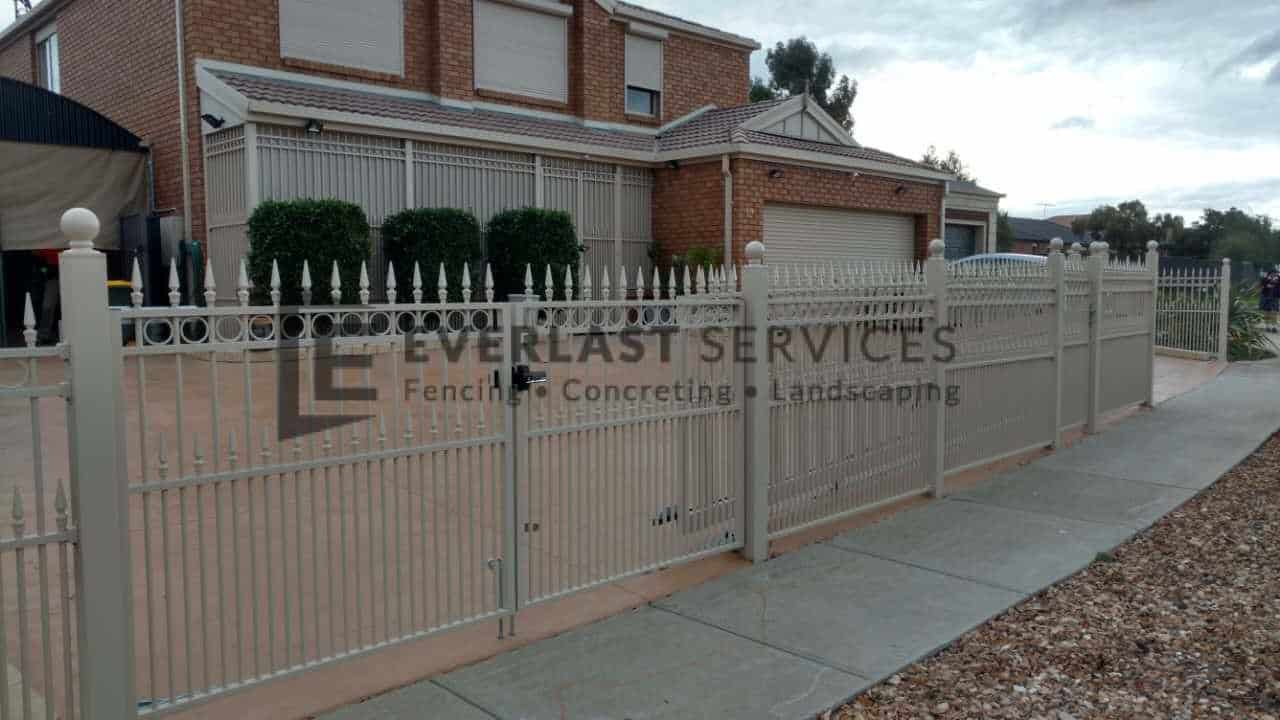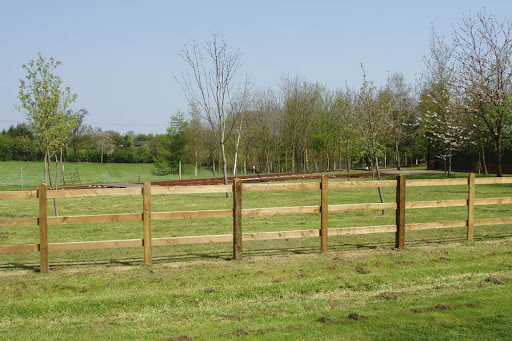The Long-Term Durability of Investing in Quality Fencing in South Auckland
The Long-Term Durability of Investing in Quality Fencing in South Auckland
Blog Article
A Comprehensive Guide to Fence Install: What You Need to Find Out About Secure Fencing Solutions
When it comes to mounting a fence, you've obtained a lot to consider. From selecting the right products to recognizing local guidelines, each step can feel frustrating. You'll need to assess your property and make a decision if you wish to deal with the setup on your own or hire an expert. But that's just the beginning. Let's check out the crucial aspects that can make or damage your fence task.
Comprehending Different Kinds of Fence Materials
When you're picking a fence, comprehending the different sorts of fencing products is important. Each product provides one-of-a-kind benefits and drawbacks, influencing your decision. Timber supplies a timeless look and can be customized, however it calls for regular maintenance and might rot gradually. Plastic is low-maintenance and resilient, withstanding fading and insects, yet it can be pricier upfront. Chain-link fencing is economical and functional for enclosing large areas, though it does not have personal privacy and visual allure. Steel secure fencing, like functioned iron or light weight aluminum, uses toughness and beauty however may need rust protection. Compound materials blend the most effective of wood and plastic, supplying sturdiness with a natural appearance. Consider your spending plan, wanted looks, and upkeep preferences when evaluating these options. Eventually, choosing the right product will certainly help you produce a fencing that fulfills your needs and enhances your building's worth.
Assessing Your Residential Or Commercial Property and Fence Needs
Prior to you start your fence installment, it's important to assess your building limits and the objective of your fencing. Understanding neighborhood guidelines and licenses will certainly likewise assist you prevent any kind of legal problems down the line. By considering these factors, you'll ensure your fence fulfills both your requirements and community requirements.
Building Boundaries and Lines
Comprehending your residential or commercial property limits is important for a successful fence setup, as it not just aids you determine where your fence will go yet also guarantees you're appreciating your neighbors' area. Beginning by examining your residential or commercial property action or survey, which normally outlines the exact boundaries. You may also wish to talk to an expert property surveyor if you're unclear.
Bear in mind, local zoning legislations may determine fencing placement and height, so inspect those policies too. Taking these actions guarantees your fencing is properly positioned and certified, making the entire process smoother for you.
Purpose of Secure Fencing
Third, fencing can define your home borders, making it clear where your space ends and your next-door neighbor's starts. A well-placed fence can help handle sound from neighboring roads or neighbors and even keep family pets and youngsters secure. By evaluating your details needs, you can select the ideal kind of fencing to achieve these advantages successfully.

Local Laws and Permits
Just how can you guarantee your fencing installation abides with neighborhood guidelines? Some areas need permits for any kind of new fencing, while others might only require them for taller frameworks.
Furthermore, consider home lines and any kind of easements on your land. Marking your borders can prevent conflicts with next-door neighbors or possible legal problems. By understanding these policies in advance, you can stay clear of pricey mistakes and determine your fence is constructed to last, improving both your property's value and your tranquility of mind.
Local Regulations and Permits for Secure Fencing
Prior to you start your fence task, it is very important to check local regulations and obtain any required licenses. Each city or region has its very own guidelines relating to fencing elevation, materials, and placement. These policies ensure that your fence complies with safety standards and neighborhood appearances.
You may need to send a fencing plan, outlining dimensions and products. Some locations might even call for a survey to confirm home boundaries.
Disregarding to adhere to these guidelines can result in penalties or required elimination of your fencing, losing both time and money. So, put in the time to study and protect the correct licenses for a smooth installment process. This action is vital in ensuring your job aligns with local laws and area requirements.
Choosing In Between Do It Yourself Setup and Specialist Services
Are you taking into consideration whether to take on the fence setup on your own or hire a professional? This choice depends upon a number of factors. Evaluate your ability degree. If you're useful and have experience with comparable jobs, do directory it yourself might save you cash. Nonetheless, be truthful regarding your capabilities; blunders can result in added costs and migraines.
Setting up a fencing takes time, and if you're juggling a busy routine, hiring a specialist can ensure it gets done efficiently. If your backyard has tough surface or particular design requirements, experts bring experience that can make a distinction.
Finally, element in local laws. An expert understands the permits and codes required, assisting you avoid possible penalties. Inevitably, weigh your abilities, time, intricacy, and policies to make the most effective selection for your secure fencing job.
Step-by-Step Guide to Fencing Setup
Once you have actually chosen to move onward with your fence installation, complying with a structured detailed method will guarantee a smooth procedure. Start by noting the fence line with risks and string to imagine the design. Next off, check neighborhood guidelines to verify compliance with elevation and building lines.
Dig article openings at least 2 feet deep, spaced according to your fence type-- typically 6 to 8 feet apart. Insert the articles into the holes and load them with concrete for stability. When the blog posts are set, affix the horizontal rails or panels, making certain they're degree.
Check for any kind of loosened links and make needed adjustments. Your fence needs to now be all set to boost your building and provide the privacy or security you need!
Upkeep Tips for Longevity of Your Fence
To keep your fence looking excellent and long-term longer, normal maintenance is vital. You ought to establish up a cleansing routine, examine for any type of damages, and apply safety coatings as needed. By remaining aggressive with these tasks, you'll assure your fencing stays strong and appealing for years ahead.
Regular Cleaning Schedule
Beginning by washing your fencing with water at the very least as soon as every period to eliminate dirt and debris. Do not fail to remember to check for any kind of corrosion on metal fences; a cable brush can help eliminate it, adhered to by a layer of rust-resistant paint. Keeping your fencing tidy not just boosts its appearance yet likewise extends its life, saving you cash in the long run.
Inspect for Damage
Frequently checking your fence for damages is crucial if you desire to preserve its integrity and longevity. Begin by walking around your fence to look for visible signs of wear, such as cracks, loosened boards, or rust. Inspect for any kind of signs of pests, like termites or woodpeckers, that might jeopardize your fence's structure.
Apply Safety Coatings
After evaluating your fence for damages, using protective finishings is a key step in guaranteeing its durability - Fence Contractors. If your fencing is plastic or steel, take into consideration a UV-protective spray or paint to stop fading and corrosion.
Make certain to cleanse the surface extensively look at this web-site before application, as dirt and gunk can threaten the coating's effectiveness. Apply the finishing in dry climate for better adhesion, and don't fail to remember to follow the supplier's directions for the ideal outcomes. Frequently reapply every couple of years to keep your fence looking great and standing strong versus the components.
Price Factors To Consider and Budgeting for Your Fencing Project
When planning your fence project, comprehending cost considerations is important to remaining within budget. Start by establishing the kind of material you desire, as prices can vary significantly in between timber, plastic, and steel. Don't fail to remember to consider labor prices-- hiring experts may conserve you time yet can increase your overall expenses.
Following, determine your property to compute the straight video footage needed, as try this this directly effects product expenses. Additionally, think about any authorizations you could require, which can add to your budget.

Last but not least, it's a good idea to establish apart a contingency fund for unforeseen expenditures. By planning thoroughly and taking into consideration these variables, you can produce a realistic budget that satisfies your secure fencing requires without damaging the bank.
Frequently Asked Inquiries
For how long Does the Average Fence Setup Take?
The average fence setup usually takes one to three days, depending upon the fencing kind and dimension of your lawn. You'll require to take right into account any hold-ups due to weather or permit requirements as well.
What Should I Do if My Fence Is Harmed?
If your fence is harmed, first assess the degree of the damage. Repair small problems on your own, however for major troubles, consider getting in touch with a professional. Don't wait too long; it'll help prevent even more problems.
Can I Install a Fence on an Incline?
Yes, you can set up a fence on a slope. You'll need to readjust your installment approach, either by stepping the panels down or making use of a racked layout to assure security and appropriate alignment with the terrain.
What Are the Best Practices for Fencing Paint?
To repaint your fencing efficiently, start with correct cleansing and sanding. Use premium paint and apply in even strokes. Don't fail to remember to select the right weather for painting, ensuring it's completely dry and moderate.
Exactly how Typically Should I Examine My Fencing?
You must examine your fence at least two times a year, concentrating on signs of damages, rot, or rust. Normal checks assist you capture problems early, ensuring your fencing stays sturdy and aesthetically appealing much longer.
Report this page